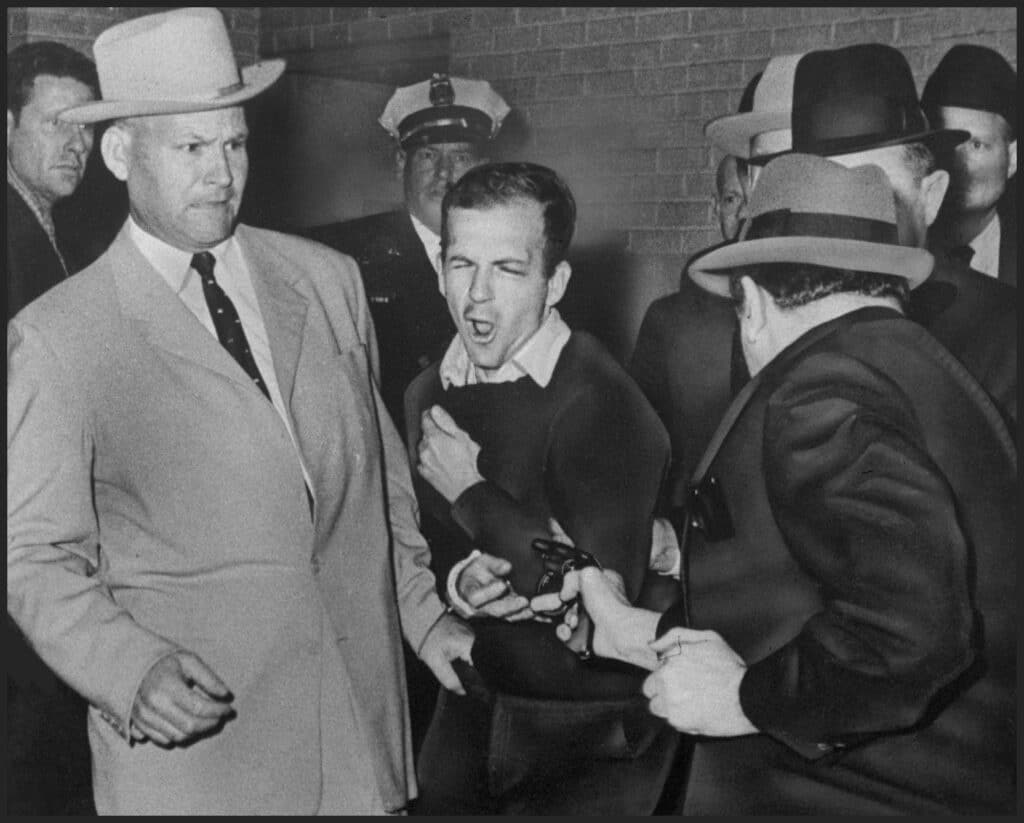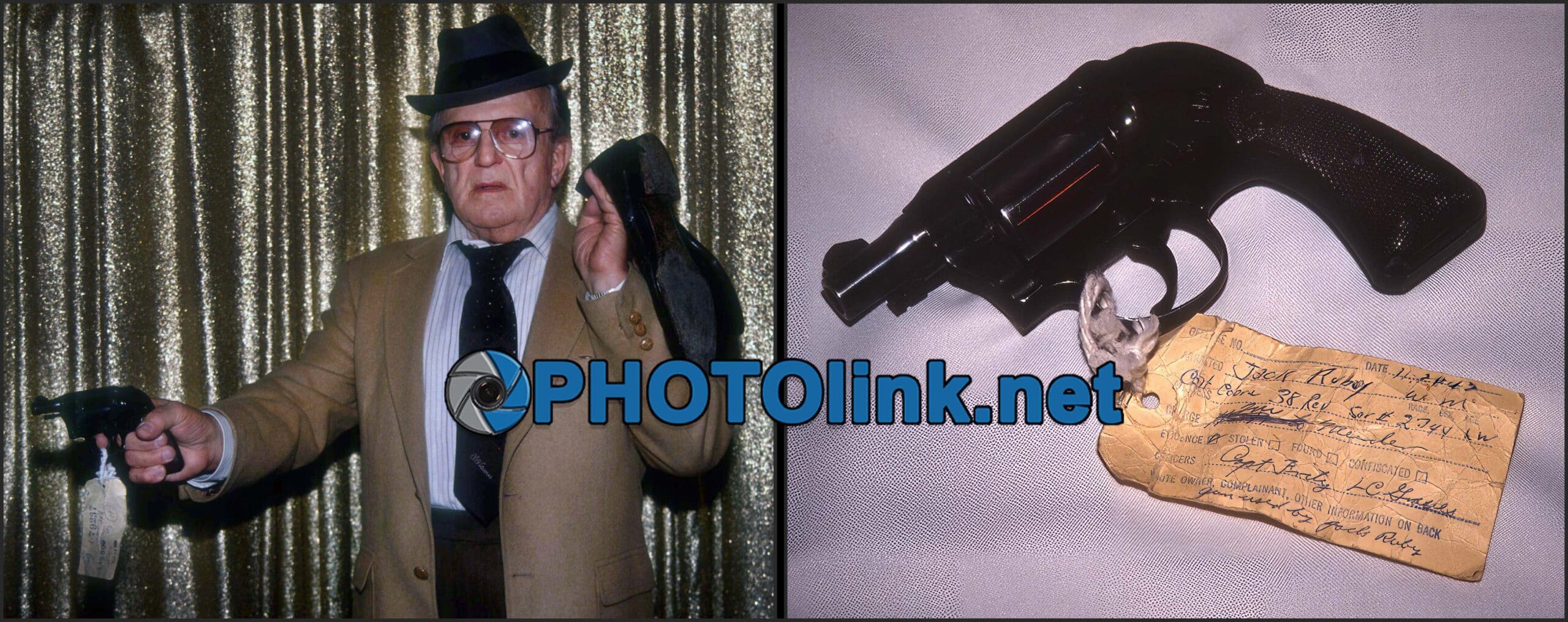The shocking killing of Lee Harvey Oswald by Jack Ruby, broadcast live on national television, profoundly impacted American history and culture. This event occurred amidst the tumultuous aftermath of President Kennedy’s assassination, adding another layer of complexity to an already turbulent period in American life.

The live capture of Oswald’s killing on television showcased the power of the media in shaping public perception and fueling conspiracy theories. The graphic nature of the event and its broadcast to millions of viewers sparked intense speculation and debate about the true nature of Kennedy’s assassination and the individuals involved. It became a defining moment in the era of television news coverage, demonstrating its ability to bring national tragedies and controversies into the living rooms of American households, ultimately influencing public opinion and historical narratives.
Furthermore, the killing of Lee Harvey Oswald by Jack Ruby also catalyzed the erosion of public trust in government institutions. The failure to protect Oswald, a key figure in the investigation of President Kennedy’s assassination, raised questions about the competency and reliability of law enforcement and the justice system. As a result, the event had profound and lasting implications for American society and culture, contributing to widespread skepticism and disillusionment with the government.

The assassination of President John F. Kennedy on November 22, 1963, marked a devastating and pivotal moment in American history. The shocking event not only led to a nationwide outpouring of grief but also sparked a profound sense of turmoil and uncertainty. The sudden loss of the beloved president sent shockwaves across the nation, leaving the American people grappling with disbelief and sorrow.
In the aftermath of President Kennedy’s assassination, Lee Harvey Oswald was swiftly identified as the alleged assassin. This revelation further intensified the already profound sense of turmoil and confusion that had gripped the nation. Oswald’s capture and subsequent arrest did little to assuage the profound loss and bewilderment of American society. Instead, it ignited a flurry of speculation, debate, and conspiracy theories as the nation sought to make sense of the tragic events that had unfolded in Dallas.
The assassinations of both President Kennedy and Lee Harvey Oswald not only left an indelible mark on American history but also ushered in a period of unparalleled cultural and political upheaval. The collective shock and grief that reverberated across the country in the wake of these tragic events set the stage for a tumultuous era in American life, the implications of which continue to resonate to this day.
The shooting of Lee Harvey Oswald by Jack Ruby, a nightclub owner with alleged ties to organized crime, sent shockwaves across the nation. The live broadcast of the event on national television not only captured the shocking moment but also intensified conspiracy theories surrounding President Kennedy’s assassination. This live coverage significantly impacted the public perception and contributed to the creation of enduring conspiracy theories.
The circumstances surrounding Oswald’s killing by Ruby raised questions about the security and legal processes of the time. To have such a high-profile prisoner shot in a police station basement, with the whole world watching, cast a shadow of doubt on the effectiveness and safety of law enforcement and the judicial system. This led to a widespread erosion of public trust in government institutions as people began to question the competence and reliability of those in power. The shooting of Oswald became a symbol of the complexities and controversies of a turbulent era in American life, as it highlighted the fragility of societal trust and the impact of the media in shaping public perception.
Jack Ruby’s shooting of Lee Harvey Oswald on live television was a shocking and pivotal moment in American history. But what motivated Ruby to commit this act of violence? Beyond the immediate circumstances of the shooting, Ruby’s background and alleged ties to organized crime have been subjects of much speculation and analysis.
Before the shooting, Ruby was a nightclub owner in Dallas, Texas, with rumored connections to the criminal underworld. This aspect of his life has led to numerous theories about his true motives for shooting Oswald. Some have suggested that his ties to organized crime may have influenced his actions. In contrast, others argue that his purported connections could have made him susceptible to manipulation by outside forces. Regardless of the validity of these claims, it is clear that Ruby’s background added a layer of complexity to the already convoluted narrative of President Kennedy’s assassination and Oswald’s subsequent killing.
Moreover, Ruby’s claim that he acted out of grief and a desire to spare Jacqueline Kennedy from the pain of a trial raises questions about his mental state and emotional motivations. This aspect of his alleged motives has been a subject of debate and scrutiny, as it provides a glimpse into the psychological factors that may have driven his decision to commit such a high-profile act of violence. Overall, the shooting of Lee Harvey Oswald by Jack Ruby continues to be a subject of intense interest and speculation as historians and researchers seek to unravel the complex web of factors that led to this pivotal moment in American history.
The killing of Lee Harvey Oswald by Jack Ruby had a profound impact on American society and culture, resonating deeply amidst the turmoil that followed President Kennedy’s assassination. The shocking moment of Oswald’s killing by Ruby was a defining event that left an indelible mark on the nation’s history and collective memory. The live capture of the shooting on national television further intensified the already heightened emotions of the American public, showcasing the power of television media in disseminating information and shaping public perception.
Following the killing of Oswald, the nation was engulfed in a maelstrom of emotions, ranging from shock and disbelief to anger and suspicion. This event significantly contributed to the erosion of public trust in government institutions, particularly the criminal justice system. The sudden and violent act, broadcast for the nation to witness, raised serious questions about security protocols and the ability of the authorities to safeguard high-profile prisoners. The live coverage of the shooting also sparked widespread debate and speculation, fueling conspiracy theories about the true nature of President Kennedy’s assassination and the potential involvement of other parties, thereby perpetuating a culture of skepticism and mistrust.
The impact of Oswald’s killing reverberated far beyond the immediate aftermath, shaping American society and culture for years to come. The event highlighted the vulnerabilities and complexities of a nation grappling with political upheaval, and it continues to serve as a poignant reminder of the fragile relationship between the government and its citizens during a turbulent era in American history. Furthermore, the event’s broadcast underscored the influential role of television media in shaping public understanding of pivotal historical moments, solidifying its status as a potent force in disseminating information and forming collective memory.
The killing of Lee Harvey Oswald by Jack Ruby had profound and lasting implications for American society and culture. The live broadcast of the event on national television not only showcased the power of television media but also deeply impacted public perception and conspiracy theories surrounding the assassination of President John F. Kennedy and the shocking moment of Oswald’s killing further exacerbated the turmoil following Kennedy’s assassination, leaving an indelible mark on the American psyche.
Moreover, the circumstances surrounding the killing of Lee Harvey Oswald contributed to the erosion of public trust in government institutions. The fact that Oswald was shot before he could stand trial led to widespread suspicions and fueled conspiracy theories about the true nature of Kennedy’s assassination. This event symbolizes the complexities of a turbulent era in American life, highlighting the fragility of public trust and the impact of media on shaping perceptions of historical events.
The event’s lasting implications on public perception and government trust continue to be subjects of study and analysis, shedding light on the intricacies of American history and culture during this period of uncertainty and upheaval. The killing of Lee Harvey Oswald by Jack Ruby remains a pivotal moment that significantly shaped the public’s understanding of a tumultuous era in American life.
